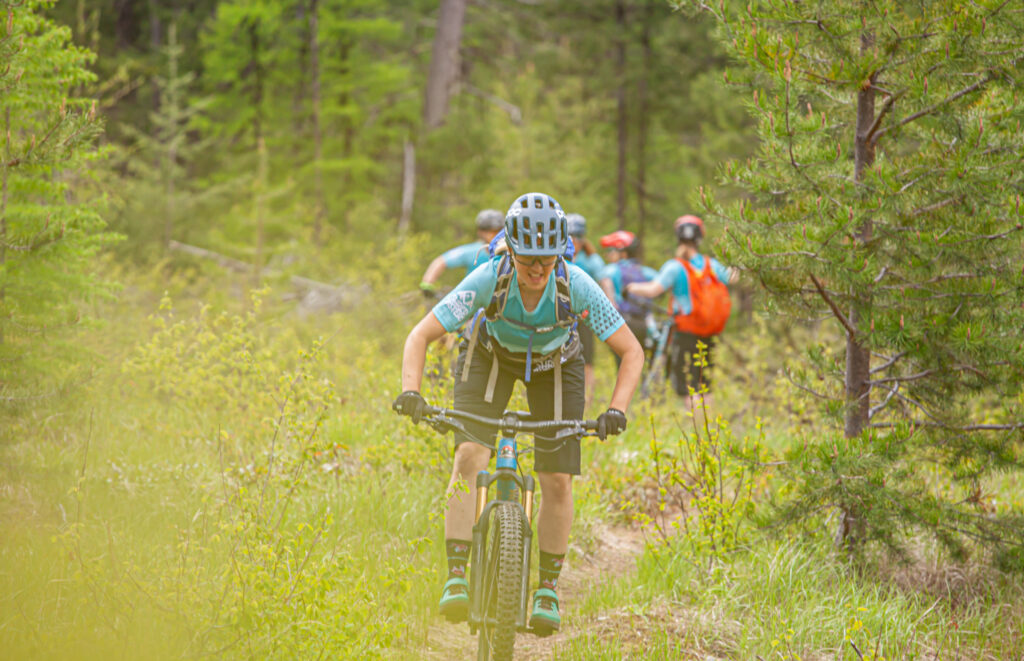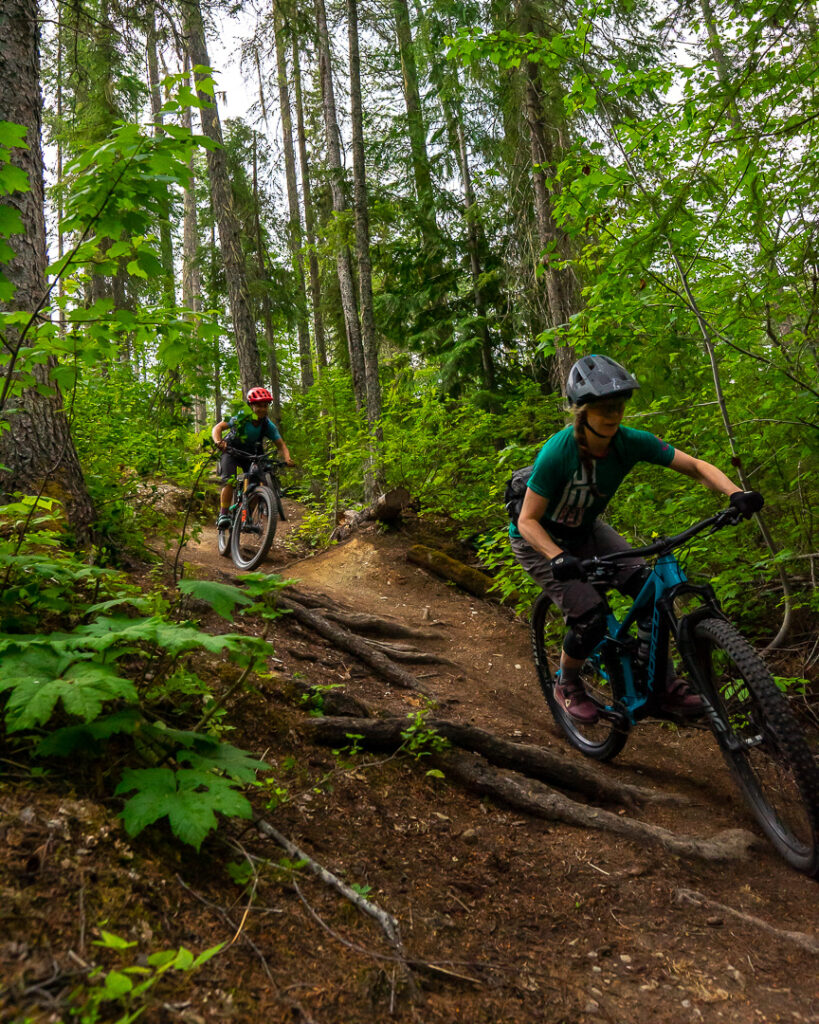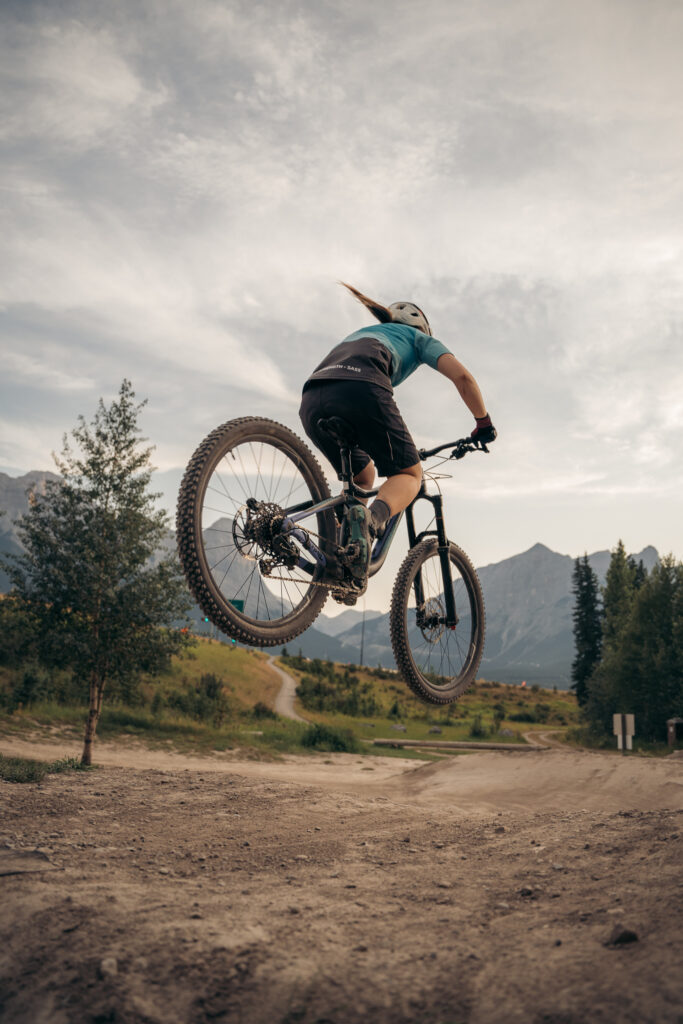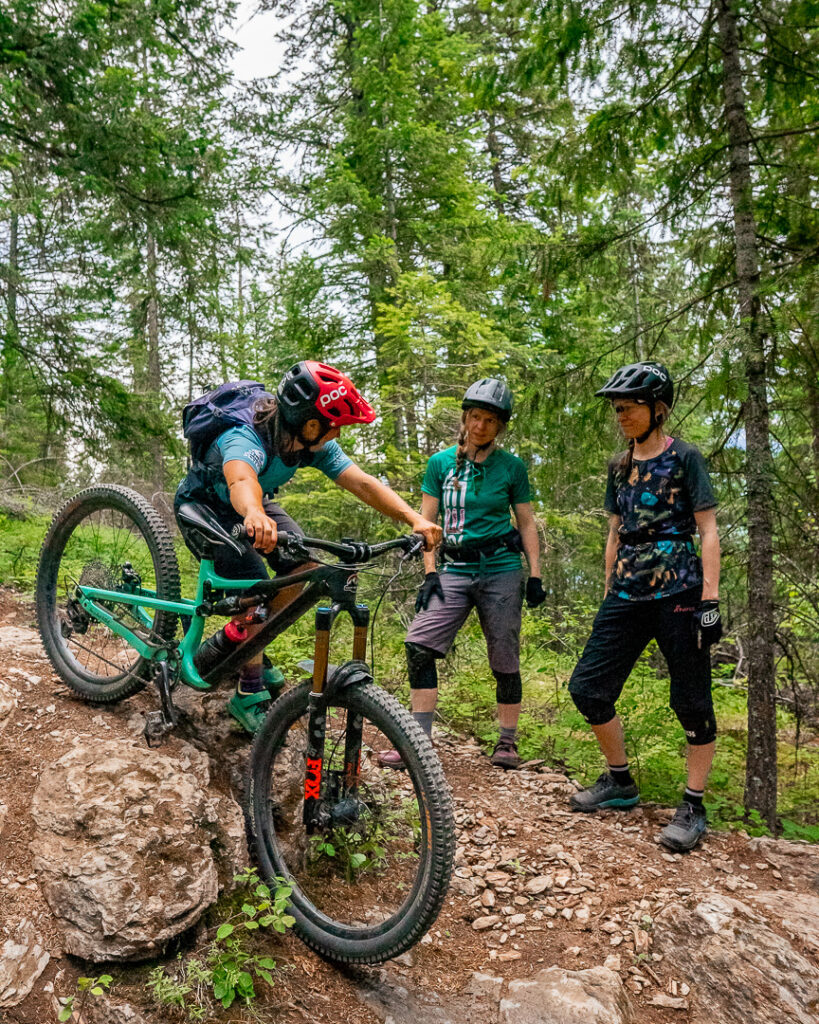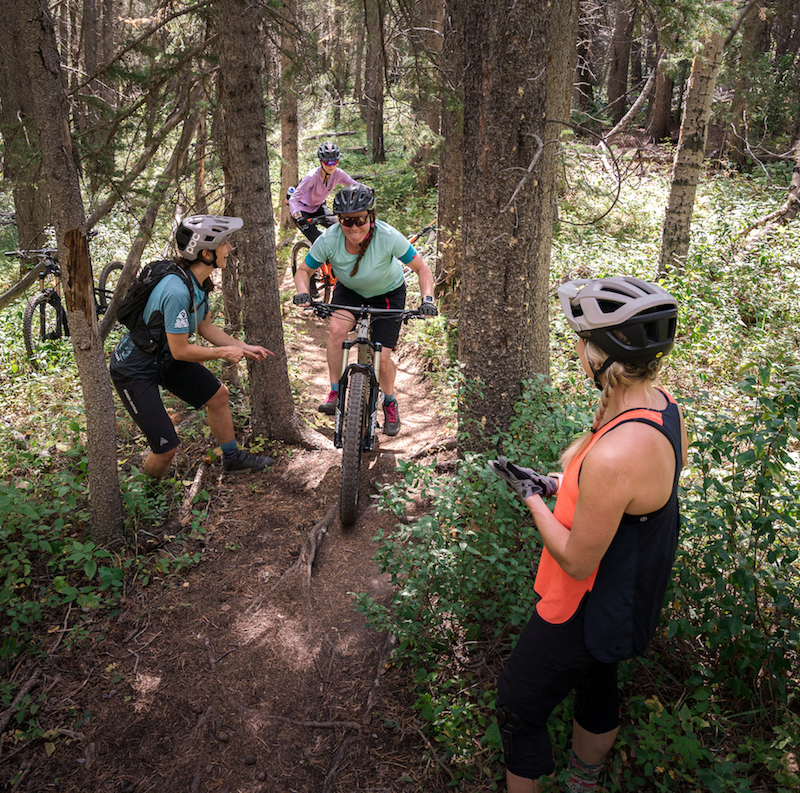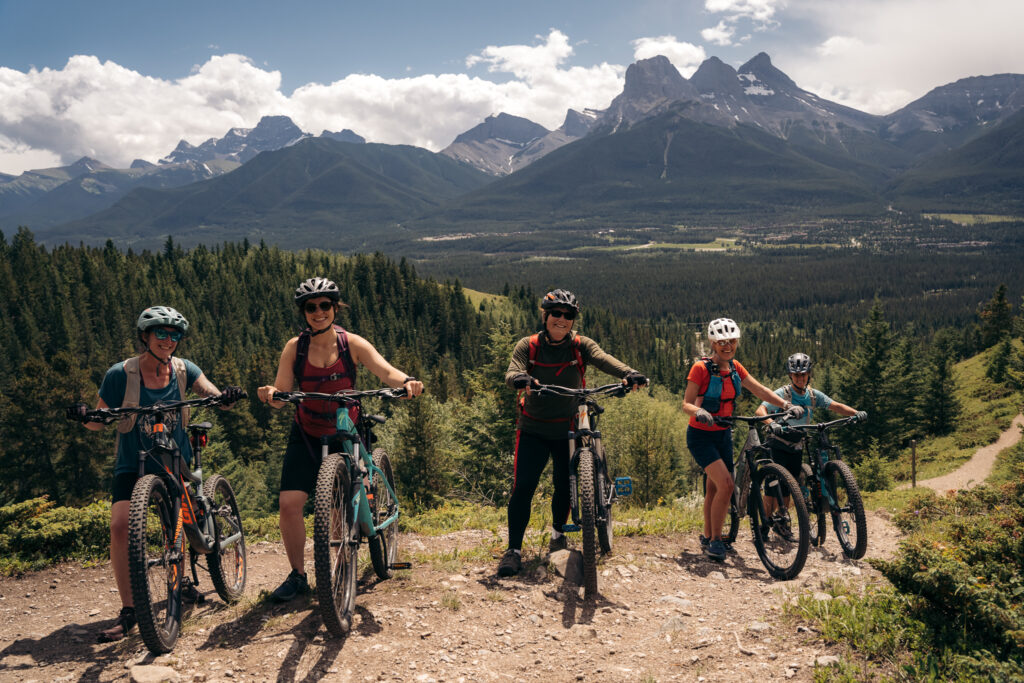Mountain Biking
Back Pain? Shoulder Pain? Knee Pain? What about bike fit? How to remove pain by adjusting your bike to your body!
This is a general guide to fit a bike. Consider a different make and model if your bike doesn’t feel right once it has been properly fitted. Slight changes from one manufacturer to the other can make a big difference in your comfort level. Talk with a pro at your local bike shop if you are unable to properly fit your bike. They will have more tips about dropper posts, cranks, handle bars, and more.
- Step 1: Look at the angle of your knee at the full extension on the down stroke; your knee should be bent 10 to 20 degrees.
- Step 2: The optimal position is for your kneecap to be stacked over the ball of your foot.
- Step 3: Sit in the seat and place your hands on the handlebars. If your arms are straight, especially with locked-out elbows, then the stem is too long and should be adjusted. An improper stem length can greatly compromise your posture and may lead to pain and discomfort in your back, neck, shoulders and wrists. The reach to the handlebars and breaks should be comfortable and allow your back to be at a 45-degree angle. Your hip should be at 90 degrees.
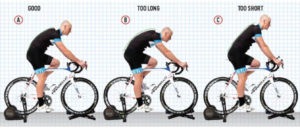
- Step 4: Check your form once the bike has been properly fitted. Pull your stomach in toward your lower back, elongate your torso, slide the shoulder blades down your upper back and keep your chest slightly lifted while riding.
OH MY ACHING BIKE
Cyclists can experience sore joints and muscles. Remember, sitting on your bike seat is not like sitting on your couch.
* Overdoing it. Your bike may have been adjusted for a very good fit, but if you go for a ride that’s 3 or 4 times longer than what you’re used to, there’s an excellent chance you’ll end up with sore joints and muscles.
* Pain in the front part of the knee can sometimes be caused by cycling in too high a gear. Many people feel that it’s very natural to pedal at 60 to 70 rpm (rpm is often referred to as “cadence” in cycling). However, your knees will do better and you’ll cycle more efficiently by selecting a lower gear that allows you to pedal at 80 rpm (or higher).
* You could end up with a sore butt and very painful blisters if your bicycle seat (saddle) is too hard, too soft, or simply mismatched to your anatomy. Beginners often want the softest seat possible because these feel more comfortable when your first get on them. However, sitting on such seat causes its soft structure to bulge out in different places, and this can lead to chafing and blisters on longer rides. Anti-chafing creams (chamois creams) can be effective at preventing the blisters and reducing pain in sensitive areas. I suggest a good pair of bike shorts go a long way in your happiness as a biker.
* Riding with your elbows locked so that you arms are in a fully extended position can lead to sore neck and shoulders, or pain in your upper back. You should keep a slight bend in the elbows so that your arms will be able to absorb the vibration and shocks that are transmitted from the handlebars.
* Foot pain can result from time riding with the arch of your foot directly over the pedal, especially when wearing shoes with a soft sole. Your feet will be much happier and you’ll cycle more efficiently by placing the ball of your foot on the pedal.
* Hand numbness: Changing the brake position, handlebar rolling and handlebar length, bicycle gloves and changing your hand position on the handlebars at regular intervals should get rid of this problem.
Document provided by Cindy Zechel
How Can a Physiotherapist Help You?
The goal of physiotherapy is to prevent, minimize and address the problems in the musculoskeletal system. A Physiotherapist helps you to prepare and heal your body from existing injuries. Treatment can include an exercise program, education, manual therapy, needling, corrective taping, and modalities. Physiotherapy will help you improve your chance in succeeding the self-management of your injury and regain strength and mobility so you can continue to enjoy the sport you love. Consult Wildwood Physiotherapy to confidently work your way back to the trails.


